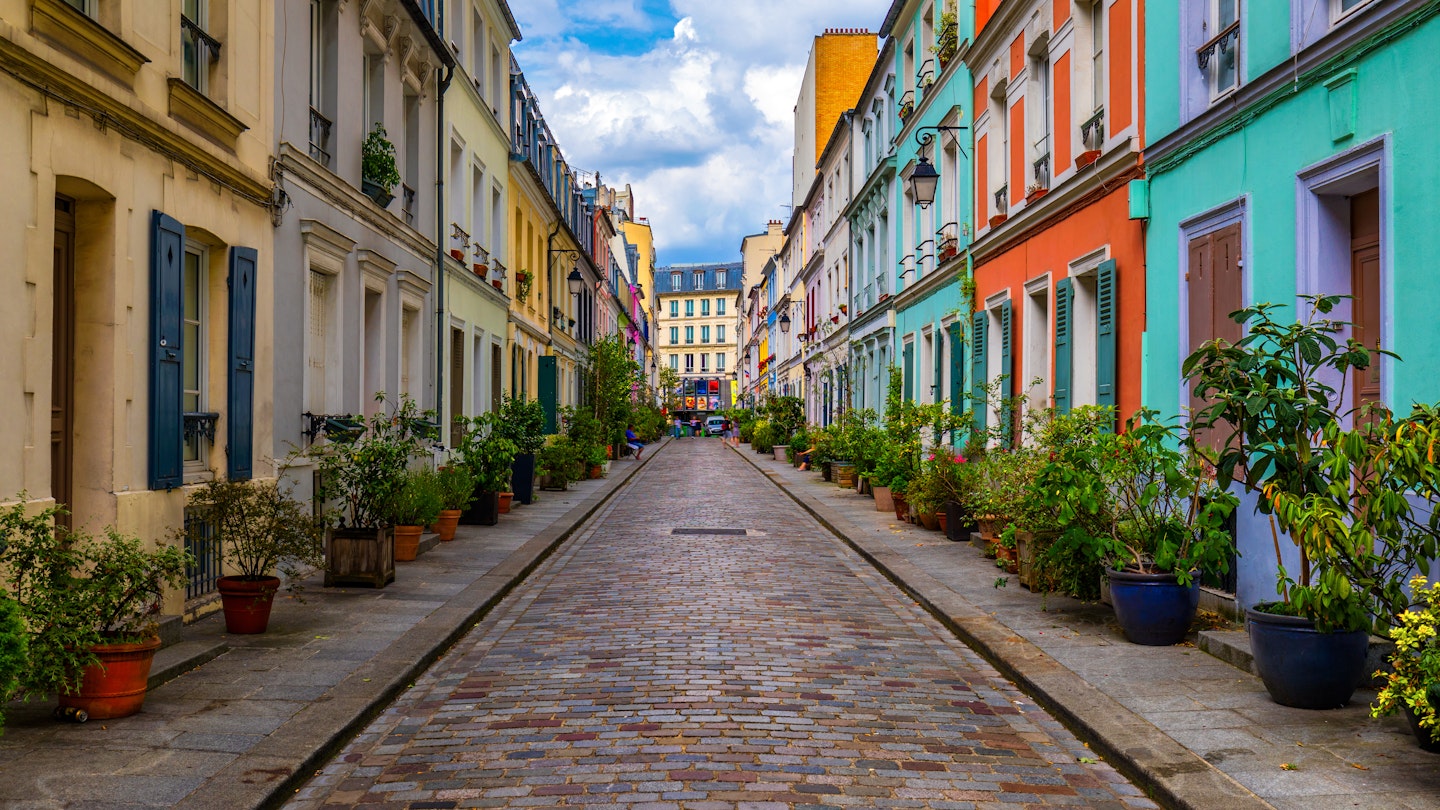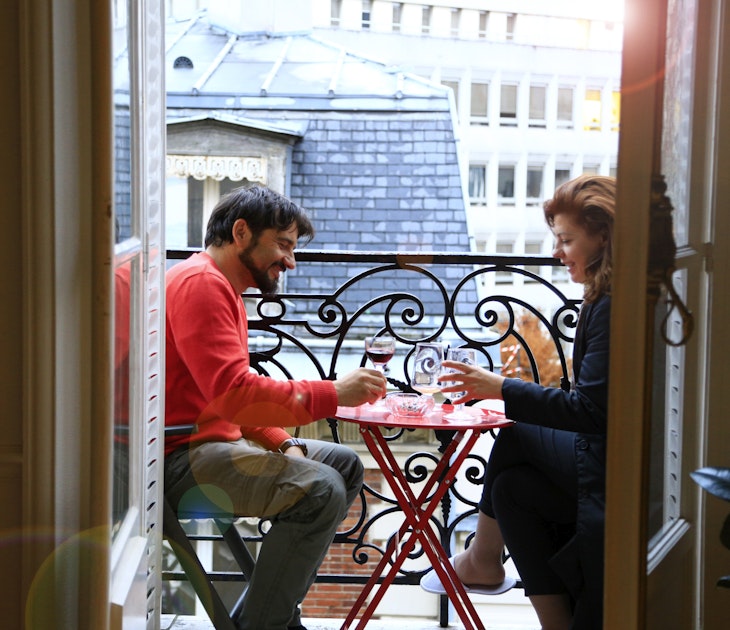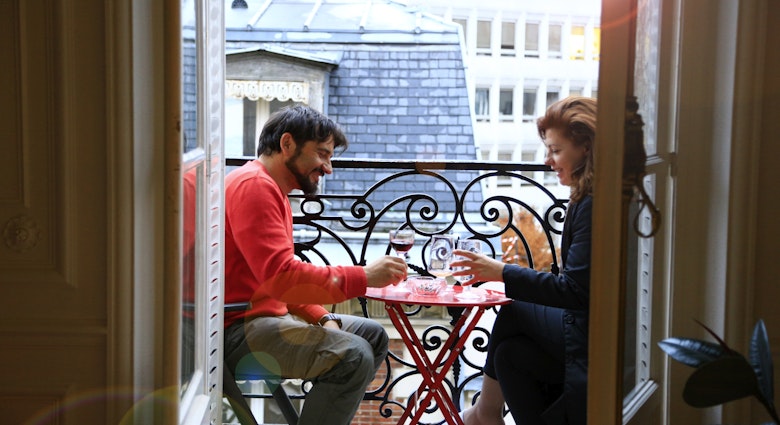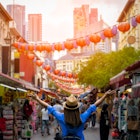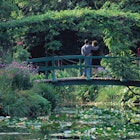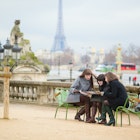Paris is a mosaic of densely populated neighborhoods, known as arrondissements, which spiral clockwise like a snail shell from the Left Bank (south) and Right Bank (north) of the Seine River right up to the périphérique (ring road) that encircles the city.
Each arrondissement has its own distinctive personality and draws for visitors, from the raucous jazz bars of the Latin Quarter (5th arrondissement) to the leafy parks of the far-flung 19th arrondissement. Here we provide a brief overview of all 20 Paris arrondissements, with details of the top attractions for travelers in each.
A handy tip: The last two numbers of any Paris postcode (which start with the city's département number, 75) indicate which arrondissement that location is in. For example, 75001 means the 1st arrondissement, and 75002 is in the 2nd arrondissement. These numbers make it easy to quickly check the location of hotels and rental apartments in the city (postcodes that don't start with 75 fall outside the périphérique).
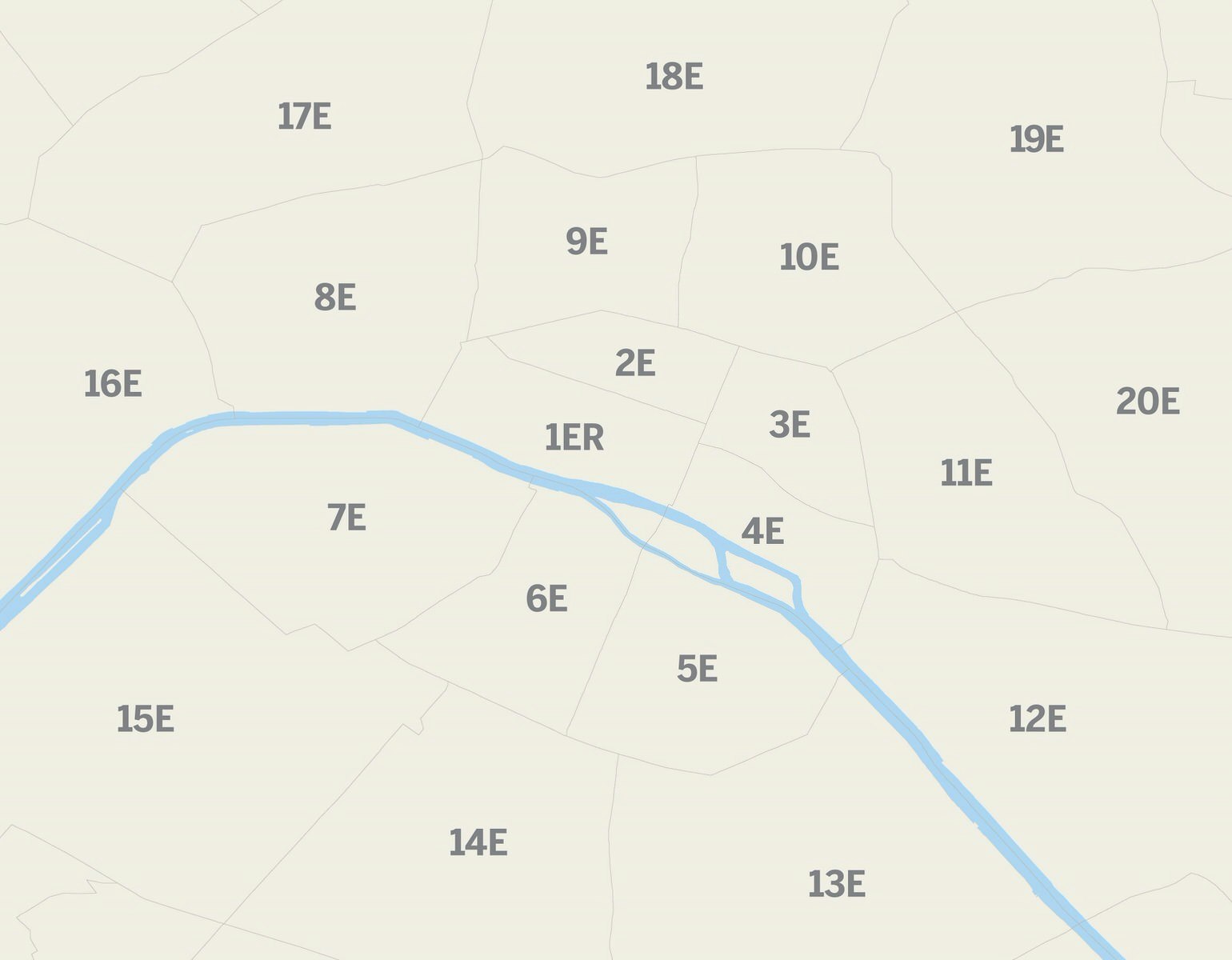
1st arrondissement
Best neighborhood for sightseeing
Primarily set on the Right Bank, Paris' elegant 1st arrondissement (premier) has the fewest residents but a huge number of blockbuster sights, including the Musée du Louvre, stately gardens Jardin des Tuileries and Jardin du Palais Royal, contemporary art museum Bourse de Commerce, and the grandiose Place Vendôme, home of some of the world’s most luxurious jewelry brands.
Staying high-end, the chic Faubourg Saint-Honoré begins here, and for high-street brands, head to the rue de Rivoli and Les Halles shopping center (Châtelet) on the site of what used to be the city’s biggest fresh produce market. The 1st arrondissement also takes in the western wedge of the Île de la Cité (the larger of central Paris' two inhabited islands), which hides the ethereal stained-glass chapel Sainte-Chapelle and picturesque square du Vert-Galant on the very tip of the island, marked by a large willow tree. The island is also home to Notre Dame Cathedral, which is technically in the 4th arrondissement.
Local tip: It’s hard to avoid tourist-trap restaurants here. Try historic places like budget-friendly Petit Bouillon Pharamond and Au Pied de Cochon or creative spots like Verjus, Alfred and Mediterranean-infused Loulou that has a fantastic terrace with an Eiffel Tower view right in the Tuileries Garden in summer.
The area abounds with other upscale places like three-Michelin-starred Kei and La Halle aux Grains slotted in at the top of the Bourse de Commerce art museum. The area is also known for the buzzy rue Sainte-Anne running from the Opéra Garnier, scattered with Japanese restaurants that range from traditional udon to sushi spots.
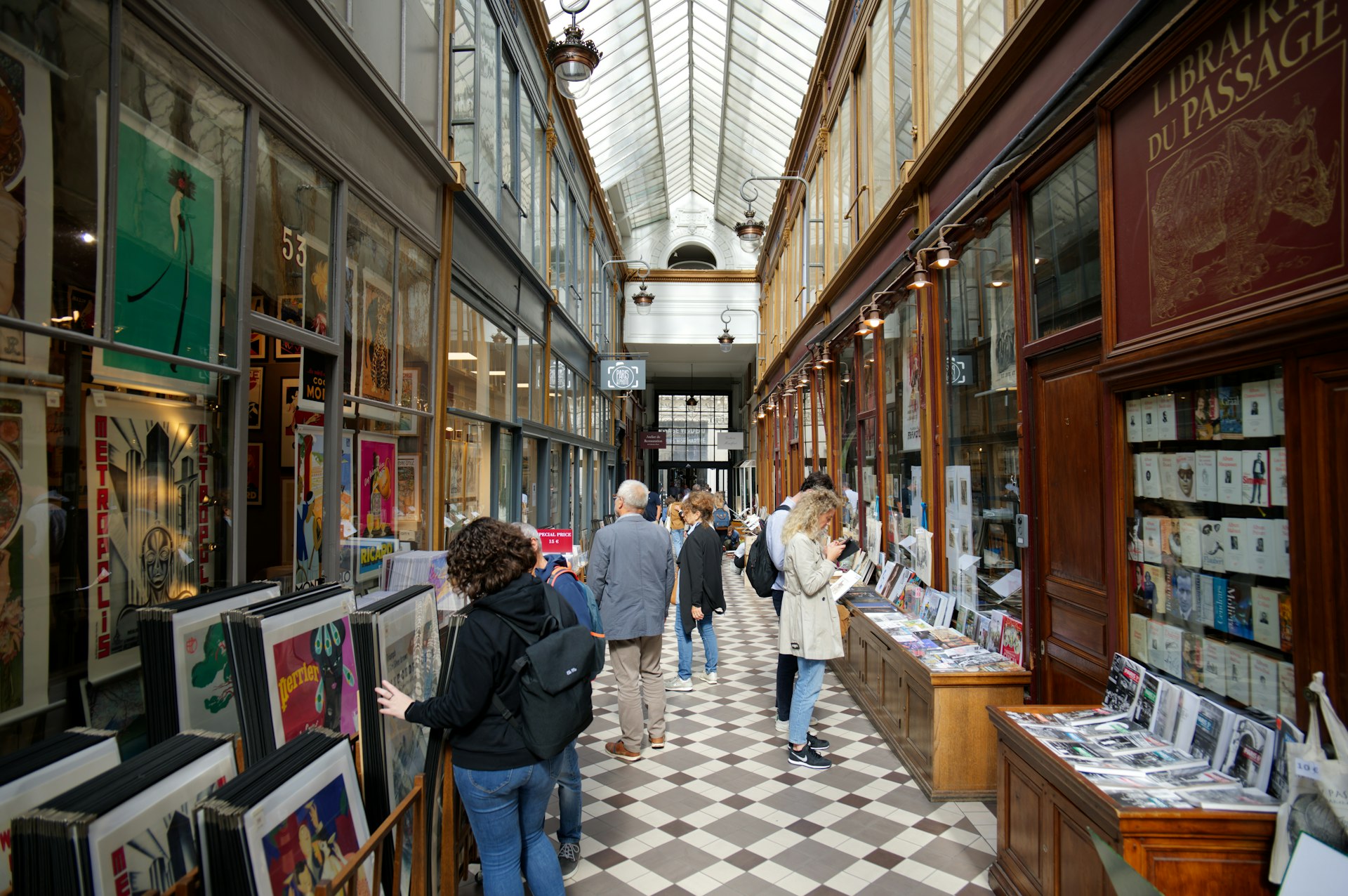
2nd arrondissement
Best neighborhood for historic passageways and pretty streets
Paris' smallest district, the 2nd arrondissement (deuxième) contains many of the city's 19th-century glass-roofed covered passages, including the oldest, Passage des Panoramas. Street stalls and food shops such as Stohrer, a bakery opened in 1730, line pedestrianized rue Montorgueil, whose northern extension, rue des Petits Carreaux, heads into the vestiges of Paris' garment-making district, Sentier, hopping with bistros and bars.
Local tip: While here, make sure to catch a play or stand-up show at one of the theaters in the Grands Boulevards area. If you’re not fluent in French, catch funny man Olivier Giraud’s How to be Parisian in One Hour, an easy stand-up show where he makes a mockery of the bad-natured locals, which proves to be a somewhat eye-opening, and extremely funny, hour.
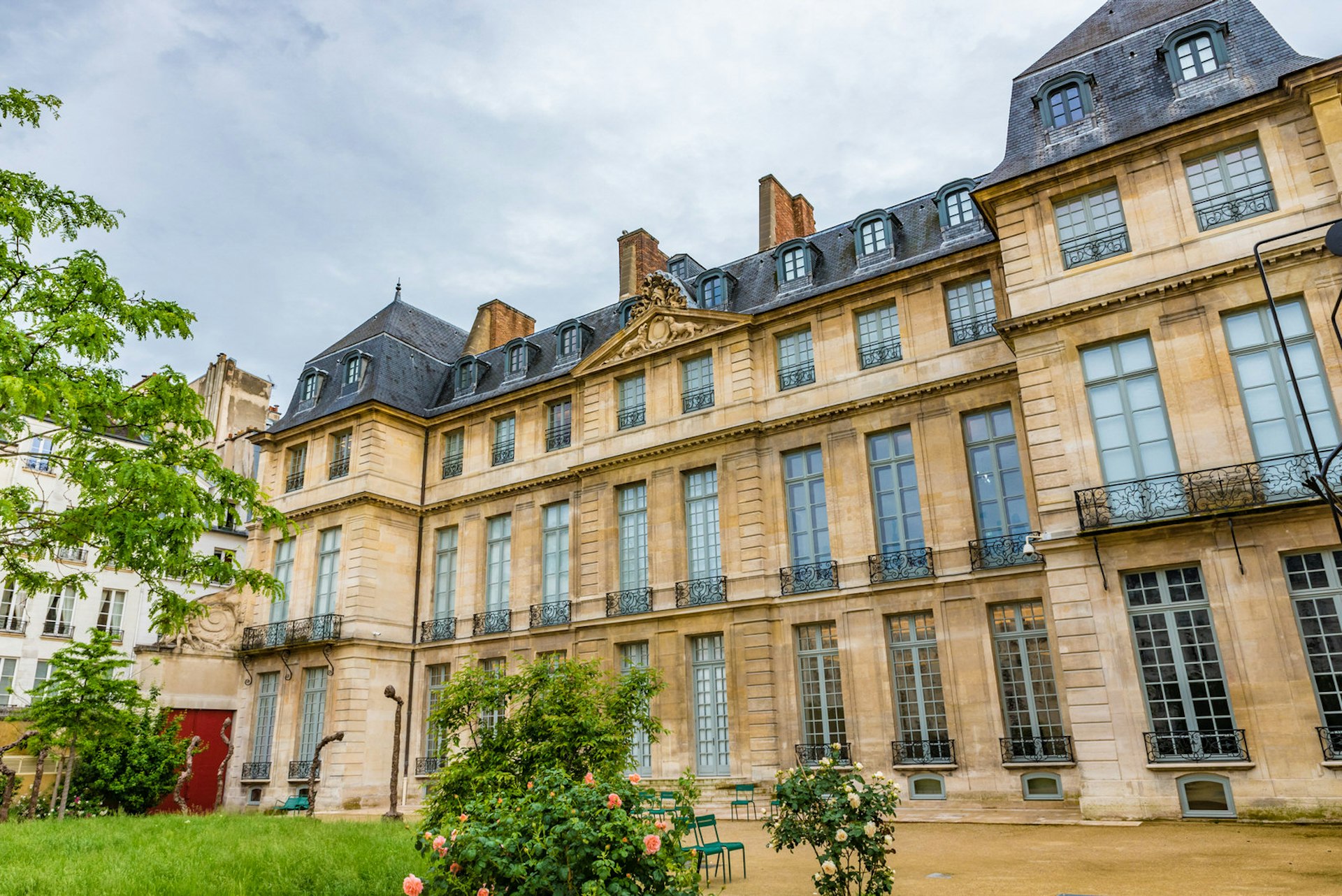
3rd arrondissement
Best neighborhood for cafes and museums
Known as the Haut Marais (Upper Marais), the 3rd arrondissement (troisième) underwent a mid-2000s metamorphosis and today bursts with design ateliers and stylish cafes. Unmissable sights include the Musée National Picasso, in a mid-17th-century private mansion, and the Musée Carnavalet, retelling the history of the French capital.
Local tip: Avoid the area on Saturdays from lunchtime as it’s usually extremely busy. If you want to have the narrow beautiful lanes to yourself, then opt for an early morning visit (before lunchtime) or try Sunday after midday, when most shops tend to be open (whereas you’ll find that most are closed elsewhere in the city).

4th arrondissement
Best neighborhood for hip Paris and world-famous heritage sites
Part of the 4th arrondissement (quatrième), the Marais district received a facelift of its own in the 1960s and '70s and remains one of Paris' most fashionable addresses. The multifaceted 4th arrondissement is also home to thriving Jewish and LGBTIQ+ communities, and the iconic Centre Pompidou cultural center, displaying modern and contemporary art. Also within this area is the eastern end of the Île de la Cité island, dominated by Notre Dame. The smaller island to its east, boutique-lined Île St-Louis, is the home of Berthillon ice cream.
Local tip: Unless you’re going to visit the museums (check opening times, as many close on Tuesdays), then explore the area at nightfall. Once the neighborhood empties of visitors, locals come out to play in the warm glow of cafes and restaurants. The area is well lit, highlighting details you might miss in the day, like the ghoulish stone carvings in the bridges straddling the River Seine.
5th arrondissement
Best neighborhood for nightlife
Fanning out around La Sorbonne’s prestigious university campus on the Left Bank, the student-filled 5th arrondissement (cinquième), also known as the Latin Quarter, abounds with secondhand bookstores and record shops, cheap restaurants, art deco cinemas, jazz clubs and late-night bars. The Musée National du Moyen Âge incorporates both medieval and Roman-era architecture, while natural history museums are located in the botanic gardens of Jardin des Plantes. French luminaries are laid to rest in the domed Panthéon mausoleum.
Local tip: Paris is a truly cosmopolitan city, but the dining scene has only just started to really reflect the country’s diverse cultural heritage. Local institution, the Grande Mosquée has been serving Moroccan specialties like tagine or couscous for years. There’s also a hammam (steam bath) open to women only, where you can spend a morning unwinding before speeding things up at this busy lunch spot.
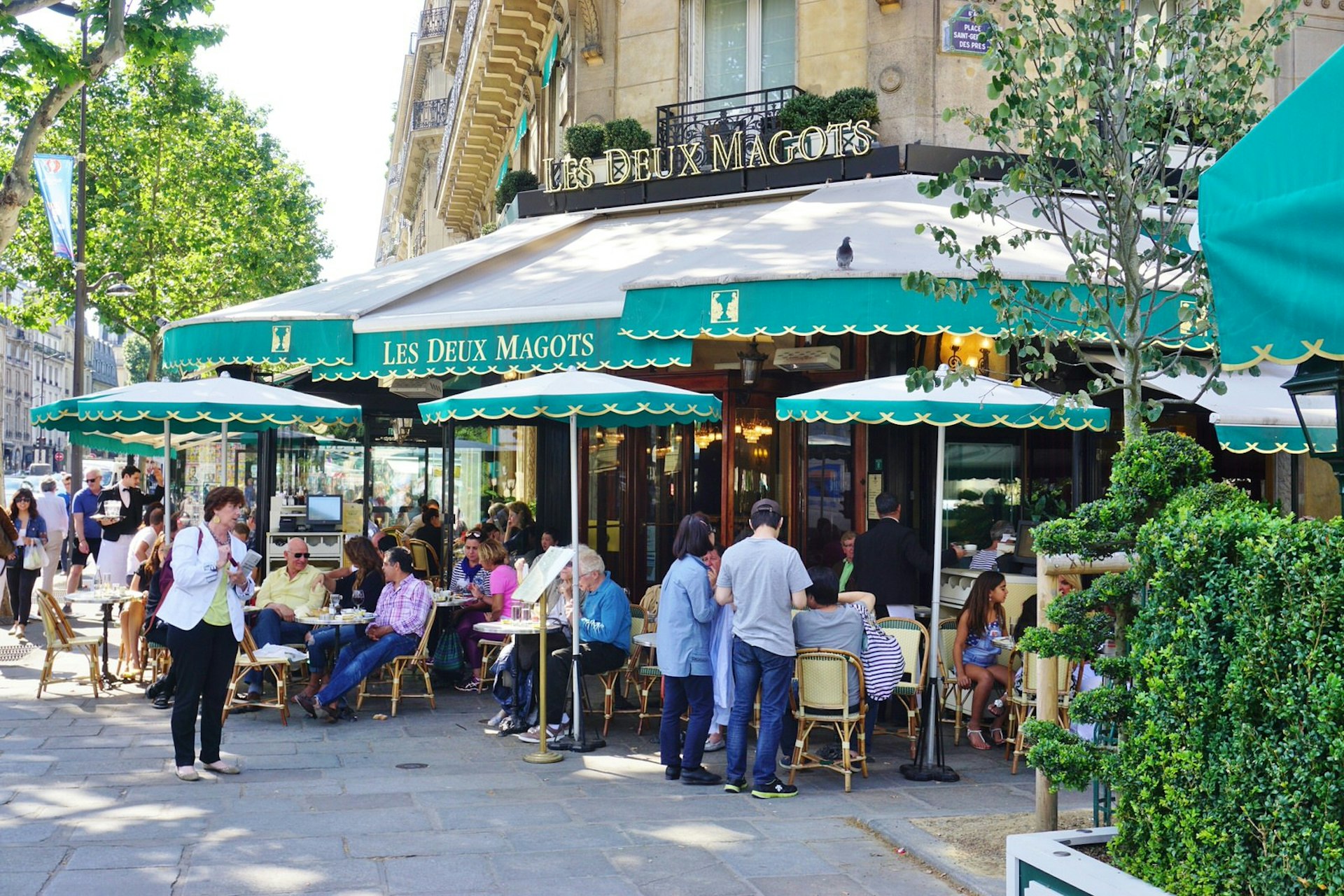
6th arrondissement
Best neighborhood for quintessential Paris
Famed for fabled literary cafes like Les Deux Magots, which sits opposite the city's oldest church, 11th-century Église St-Germain des Prés, the quintessentially Parisian 6th arrondissement (sixième) is a jewel-box of exquisite boutiques, restaurants and hotels. In the arrondissement's southeast is the chestnut-shaded park Jardin du Luxembourg, where children prod 1920s wooden toy sailboats on its octagonal pond.
Local tip: Avoid the overly touristy cafes if you can because, although they are still gorgeous, very little remains of their local soul. Instead, book dinner and a show at Chez Papa Jazz Club and travel back in time to the sound of the sultry voice of a jazz singer while you tuck into your magret de canard (duck breast).
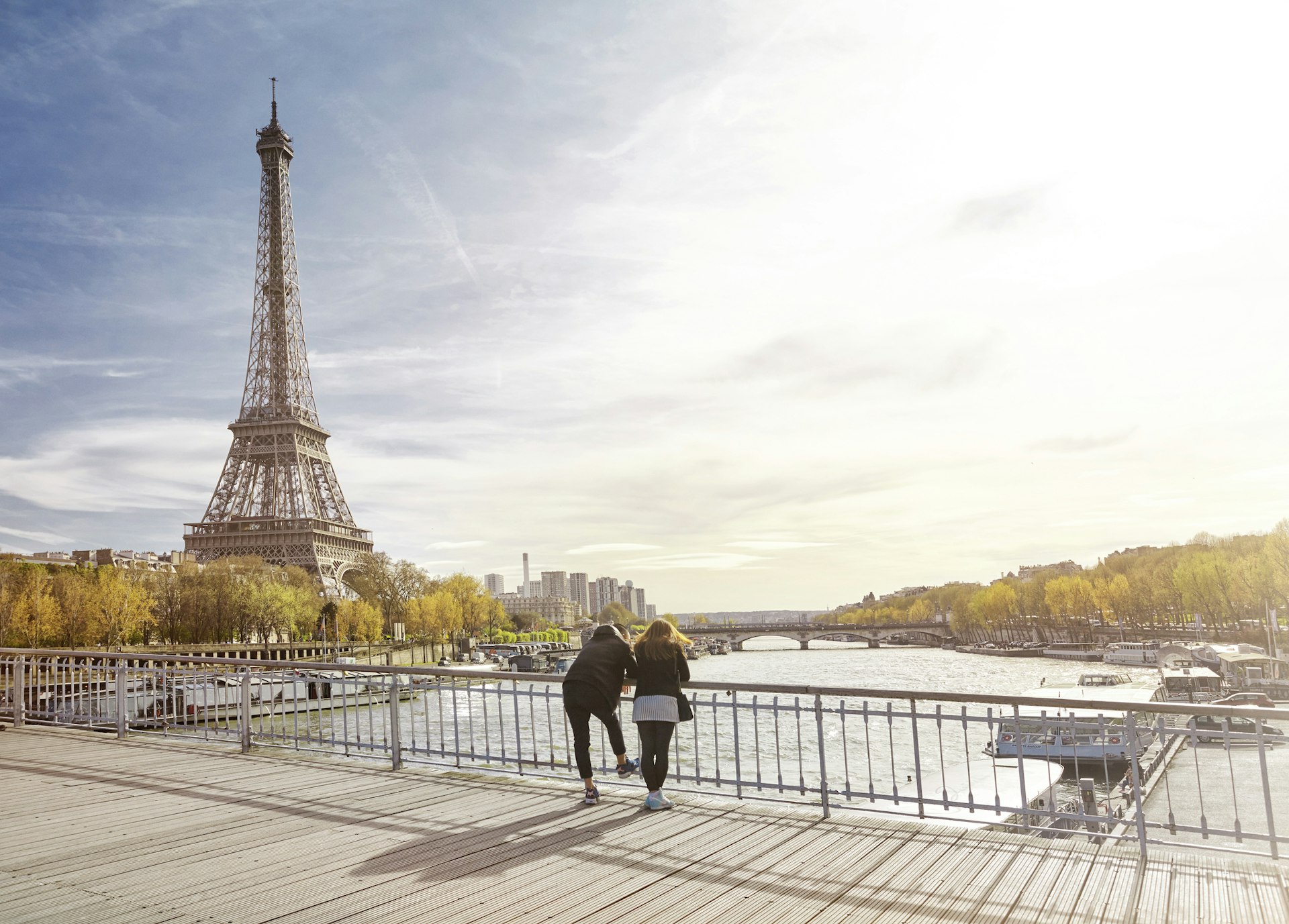
7th arrondissement
Best neighborhood for iconic Paris landmarks
West along the Left Bank is the wealthy 7th arrondissement (septième). Shaped like a fan, its attractions span the impressionist art showcase Musée d'Orsay, the Musée Rodin's sculpture-filled mansion and rose garden, and the indigenous and folk-art museum, Musée du Quai Branly – Jacques Chirac. Manicured lawns front the central Hôtel des Invalides military complex containing Napoléon's tomb. To the west is Paris' emblematic Eiffel Tower.
Local tip: Set some time aside to explore rue St Dominique and rue Cler, which are the most charming streets in the area with good French delis selling everything from pastries to wine, as well as fabled restaurants like the upscale bistro Fontaine de Mars.
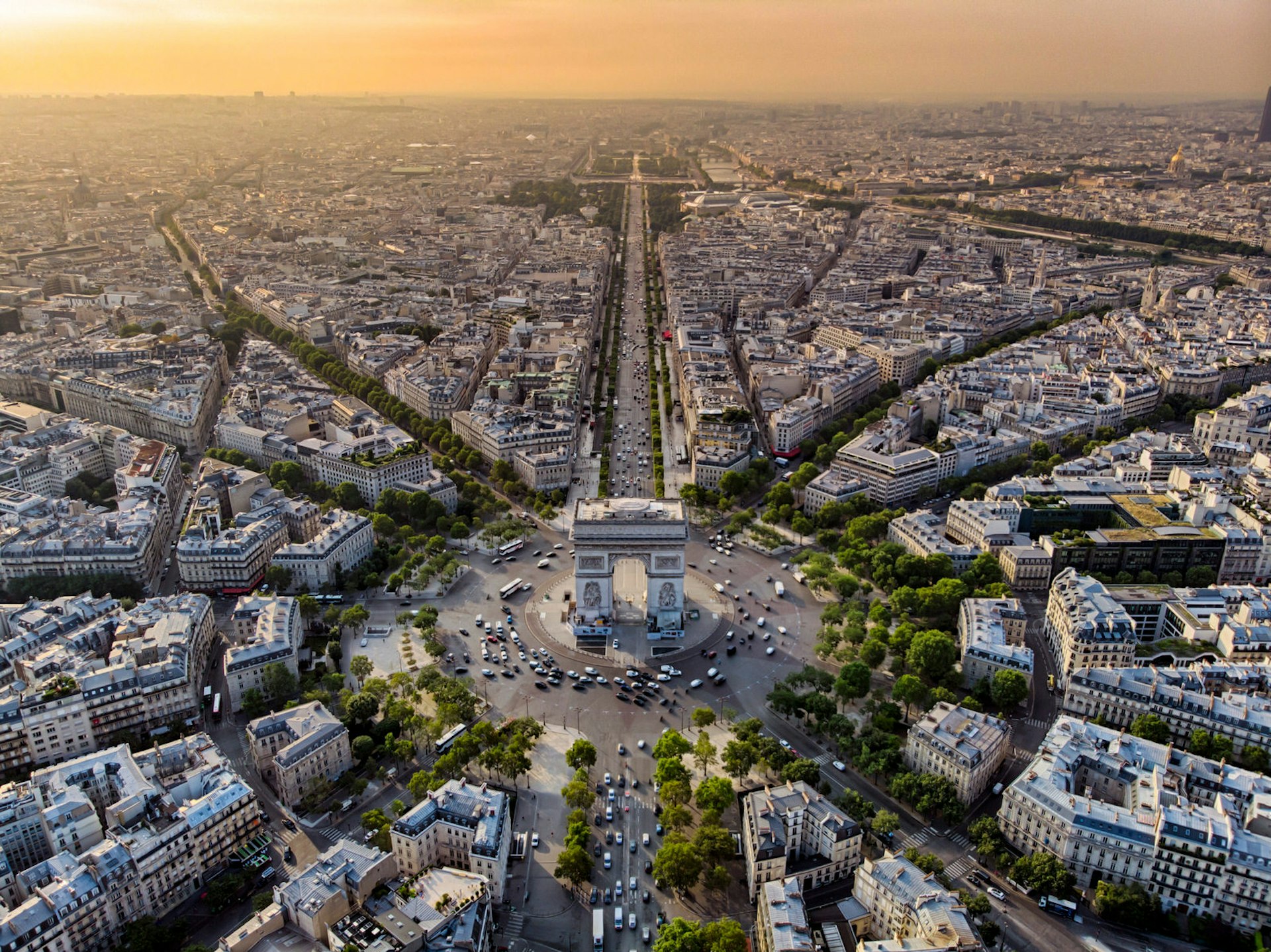
8th arrondissement
Best neighborhood for luxury shopping
Back on the Right Bank, the grand 8th arrondissement (huitième) is bisected by broad avenues including the Champs-Élysées, bookended by the mighty Arc de Triomphe and the vast Place de la Concorde, where Louis XVI was guillotined. Avenues Champs-Élysées, George V and Montaigne form the Triangle d’Or (Golden Triangle), home to flagship fashion houses like Chanel and Dior. Gourmet emporiums surround Place de la Madeleine's Grecian temple-style church Église de la Madeleine.
Local tip: A huge arrondissement, it has a plethora of small and big museums like the Nissim de Camondo, Cernuschi, Jacquemart-Andrée, as well as larger museums like the soon-to-reopen landmark Grand Palais, the Petit Palais, the Modern Art Museum, Palais de Tokyo, Palais Galliera, and the Musée de l’Orangerie.
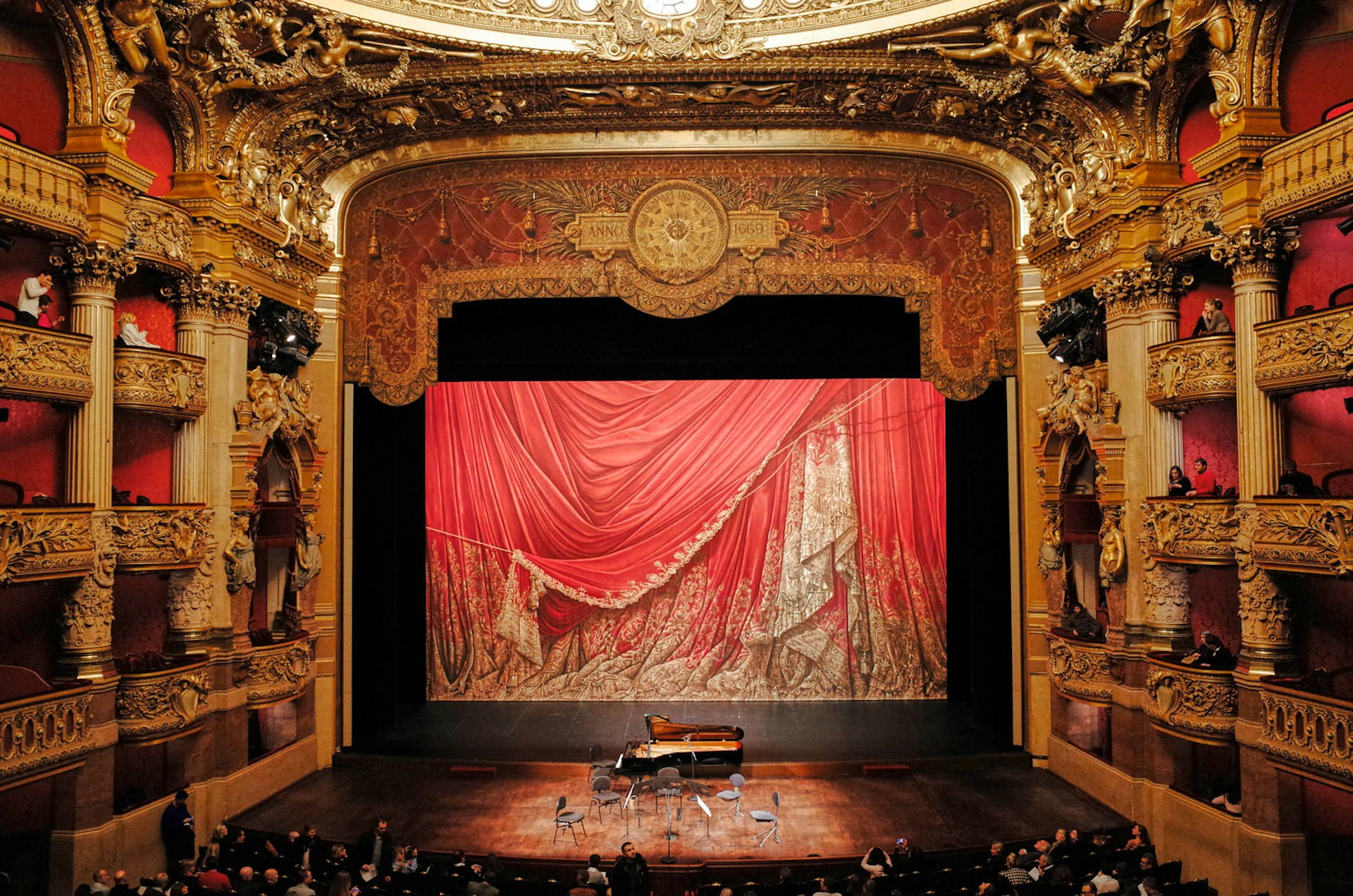
9th arrondissement
Best neighborhood for department stores and markets
Eastwards, the 9th arrondissement (neuvième) is the home of Paris' original and most famous opera house, Palais Garnier, thanks to a starring role in Gaston Leroux's 1910 novel The Phantom of the Opera. It's also where you'll find art-nouveau department stores Galeries Lafayette and Le Printemps. Foodie street rue des Martyrs, with fromageries (cheese stores), boulangeries (bakeries) and more, extends uphill from here, while glamorous cocktail bars such as Lulu White cluster in the north.
Local tip: Restaurants and bars aside, there’s plenty else to entertain in the area’s numerous theaters like Edouard VII and the Mogador, and cool concert venues like Elysée Montmartre, La Cigale and La Boule Noire, among many others including drag cabaret Madame Arthur. Some of these venues are in the 18th arrondissement, but remain an integral part of Pigalle, which is often considered as part of the 9th.

10th arrondissement
Best neighborhood for transport links and canal-side dining
Grittier than the arrondissements that precede it, the 10th arrondissement (dixième) is many visitors' introduction to Paris: train stations Gare du Nord and Gare de l'Est are both here. Iron footbridge-spanned Canal St-Martin's revival continues apace thanks to indie-run bars, restaurants, shops and cultural centers such as Point Éphémère.
Local tip: Most visitors tend to zoom to the cool canalside spots, but for a different twist on Paris, dive into the tangle of streets south of La Chapelle metro station in Little India and its canteens. If you happen to be here around September 19, don’t miss Ganesh Chaturthi, a colorful festival during which the locals pay tribute to the deity of Ganesh.
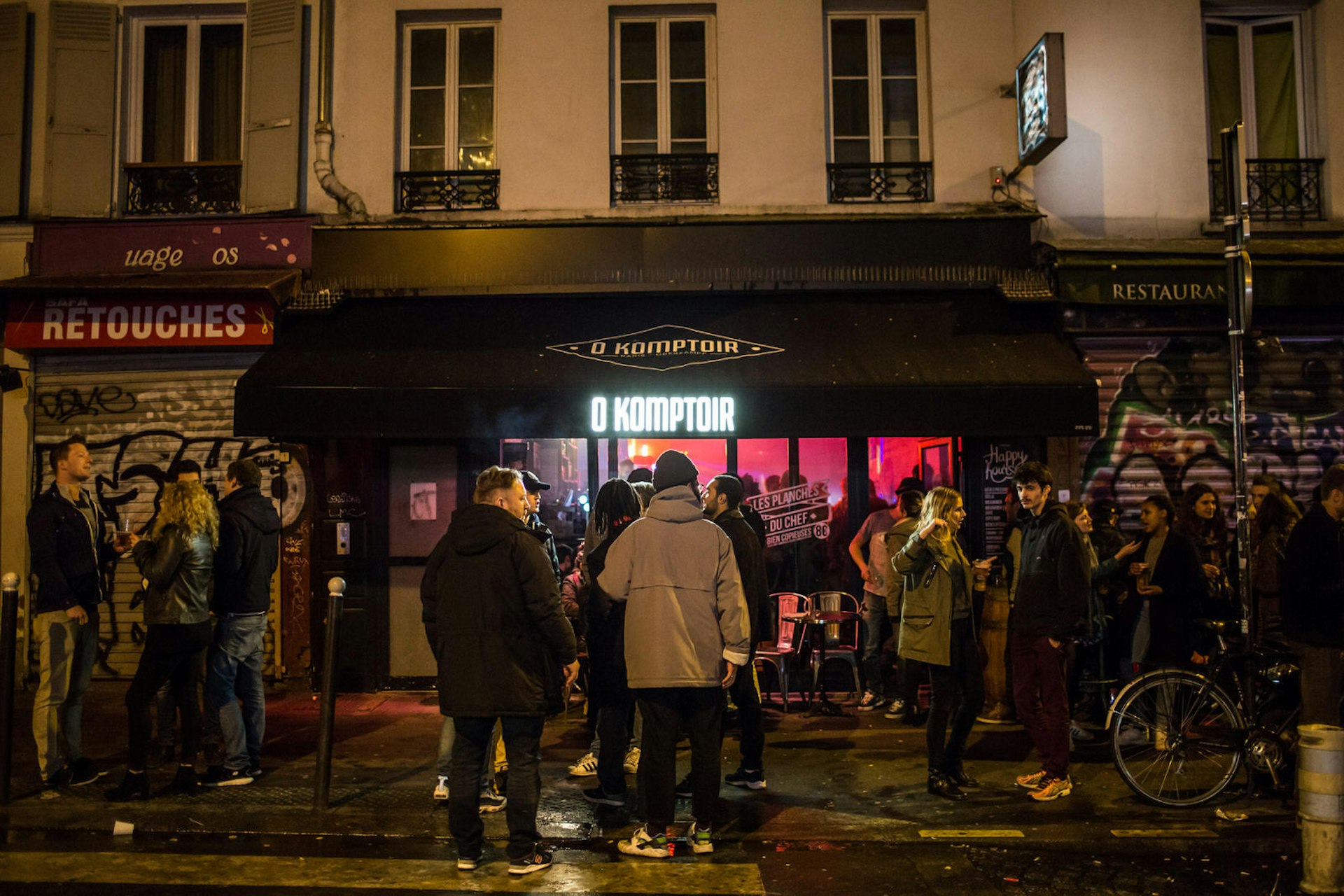
11th arrondissement
Best neighborhood for creatives
Home to traditional furniture makers and a new wave of graphic designers and multimedia artists, Paris' most densely populated arrondissement, the 11th (onzième), is a hotbed of creativity, with a foundry-housed digital museum, L'Atelier des Lumières, craft breweries, collaborative coffee roasteries and sizzling new restaurant openings. Rue Oberkampf, with live-music and DJ venues, is the area's nightlife spine.
Local tip: Take a bucolic walk in the area that’s otherwise bustling, by heading down on the banks of the Arsenal Port, a small leisure port in Bastille, with pretty boats bobbing up and down on the quiet waters of the small canal.
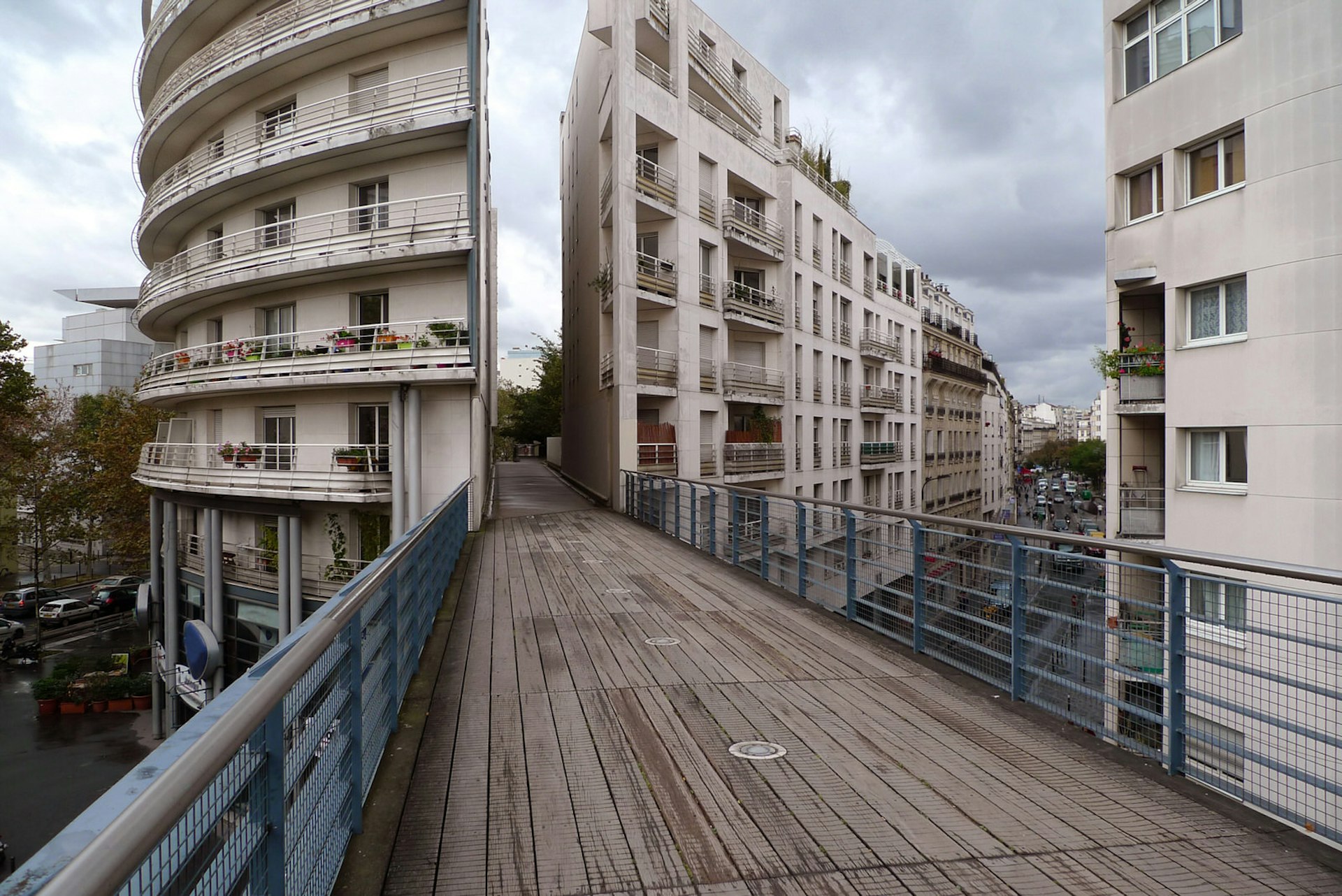
12th arrondissement
Best neighborhood for local flair
Stretching from Place de la Bastille (ground zero of the French Revolution) to the sprawling forest Bois de Vincennes, and traversed by elevated park Promenade Plantée, the resolutely local 12th arrondissement (douzième) harbors the monolithic Opéra Bastille, Marché d’Aligre's lively food markets and flea markets, and old-wine-warehouses-turned-shopping-center Bercy Village.
Local tip: The local highlight of this arrondissement is the Bois de Vincennes with its sprawling parkland, lakes and really well laid-out zoological park. Don’t miss the spectacular Immigration Museum with its intricate bas-reliefs, and make sure to pop into the Grand Pagoda, the International Buddhist Institute inside a beautiful wooden colonial 1930s structure on a lake (check the site for timings and public events).

13th arrondissement
Best neighborhood for unique flavors
Across on the Left Bank, the 13th arrondissement (treizième) is home to Paris' largest Chinatown, where Asian bakeries and Buddhist temples are surrounded by a forest of skyscrapers, many used as giant street-art canvases. Elsewhere, innovations like the book-shaped national library Bibliothèque Nationale de France and repurposed industrial sites – such as the former railway depot, now the housing startup campus Station F – make the regenerating 13th arrondissement unlike anywhere else in Paris.
Local tip: The area’s been expanding for a few years, with recent additions being the shiny sky-high Too Hotel with its Starck-designed restaurant up on the 27th floor, possibly the highest in the city after the Eiffel Tower’s Jules Verne, that comes with sprawling views of Paris like you’ve never seen before. Not to miss when in the area is a show at top street-art gallery, Itinerrance (check the site for what’s on), where art show opening nights are the liveliest times to visit.
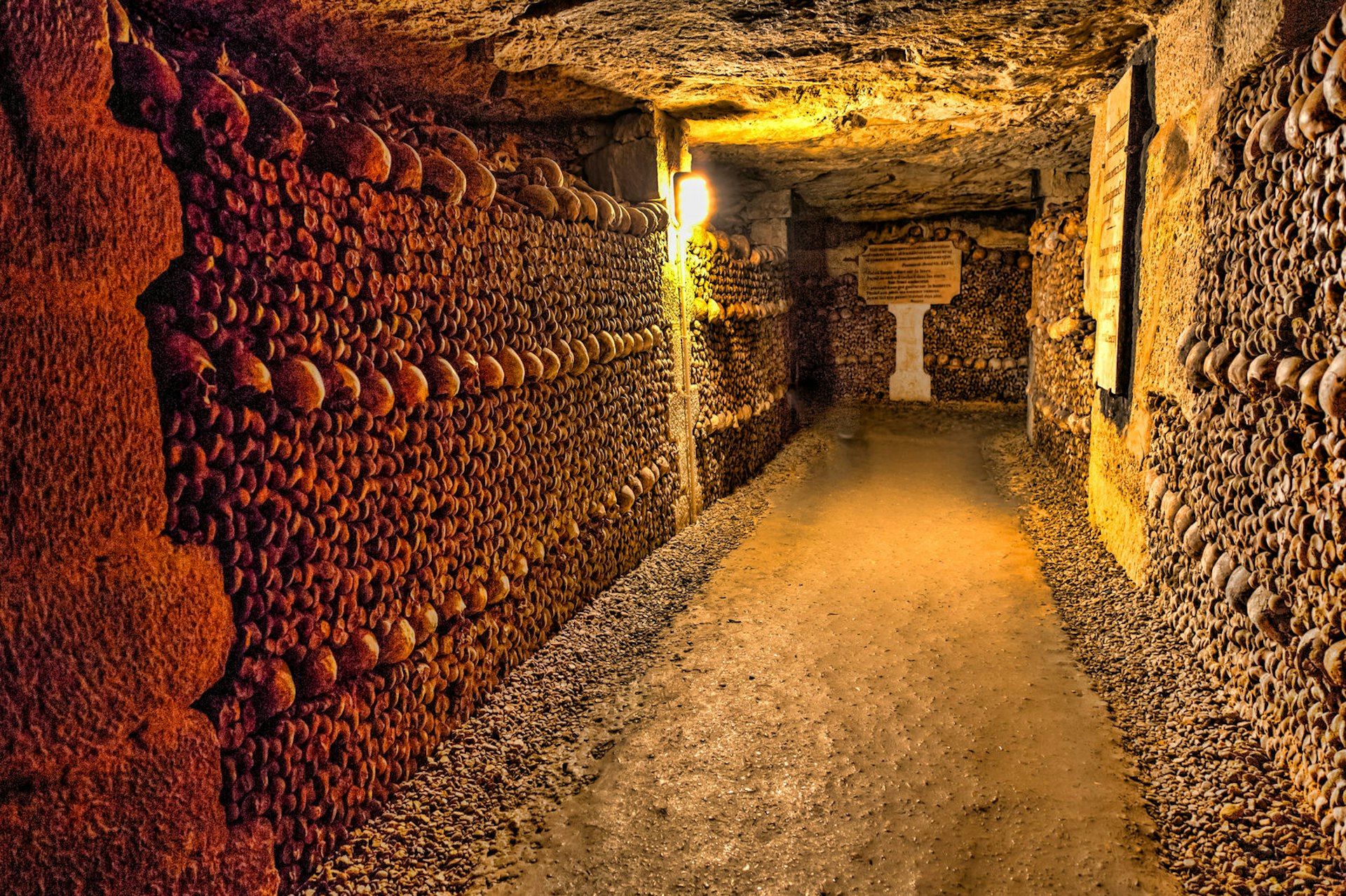
14th arrondissement
Best neighborhood for catacombs and crêperies
The northern part of the 14th arrondissement (quatorzième) is the entry point for skull-and-bone-lined subterranean tunnels Les Catacombes, long-standing Montparnasse brasseries such as Le Select and stacks of Breton crêperies. Mostly residential, the south part of the district shelters leafy Parc Montsouris.
Local tip: This is possibly one of the most unsung areas of the city, so if you’re here for the Catacombs, set some time aside to also pop into the atmospheric Giacometti Institute and lofty, light-filled contemporary art space the Fondation Cartier, which puts on some of the best artist solo shows in town including works by Ron Mueck and Damien Hirst.
15th arrondissement
Best neighborhood for bustling streets
Farthest west on the Left Bank, the sweeping 15th arrondissement (quinzième) is Paris' most populous, with a mix of 19th-century and modern apartment blocks. Sights are few, but parks here include Parc André Citroën, home to the helium-filled Ballon de Paris providing aerial views, and artificial island Île aux Cygnes.
Local tip: Unless they live here, most Parisians will roll their eyes at the very mention of le quinzième mainly because it’s very residential and sleepy. If you happen to be here and are looking for something to keep you busy, then the cobblestone streets of the Commerce area with its handful of market stalls and boutiques is your best bet, as is Beaugrenelle mall if it’s raining. If you’re looking for a place to eat, Polichinelle, hidden in a youth hostel style hotel close to the Eiffel Tower, offers a really good buffet of vegetarian takes on French staples.
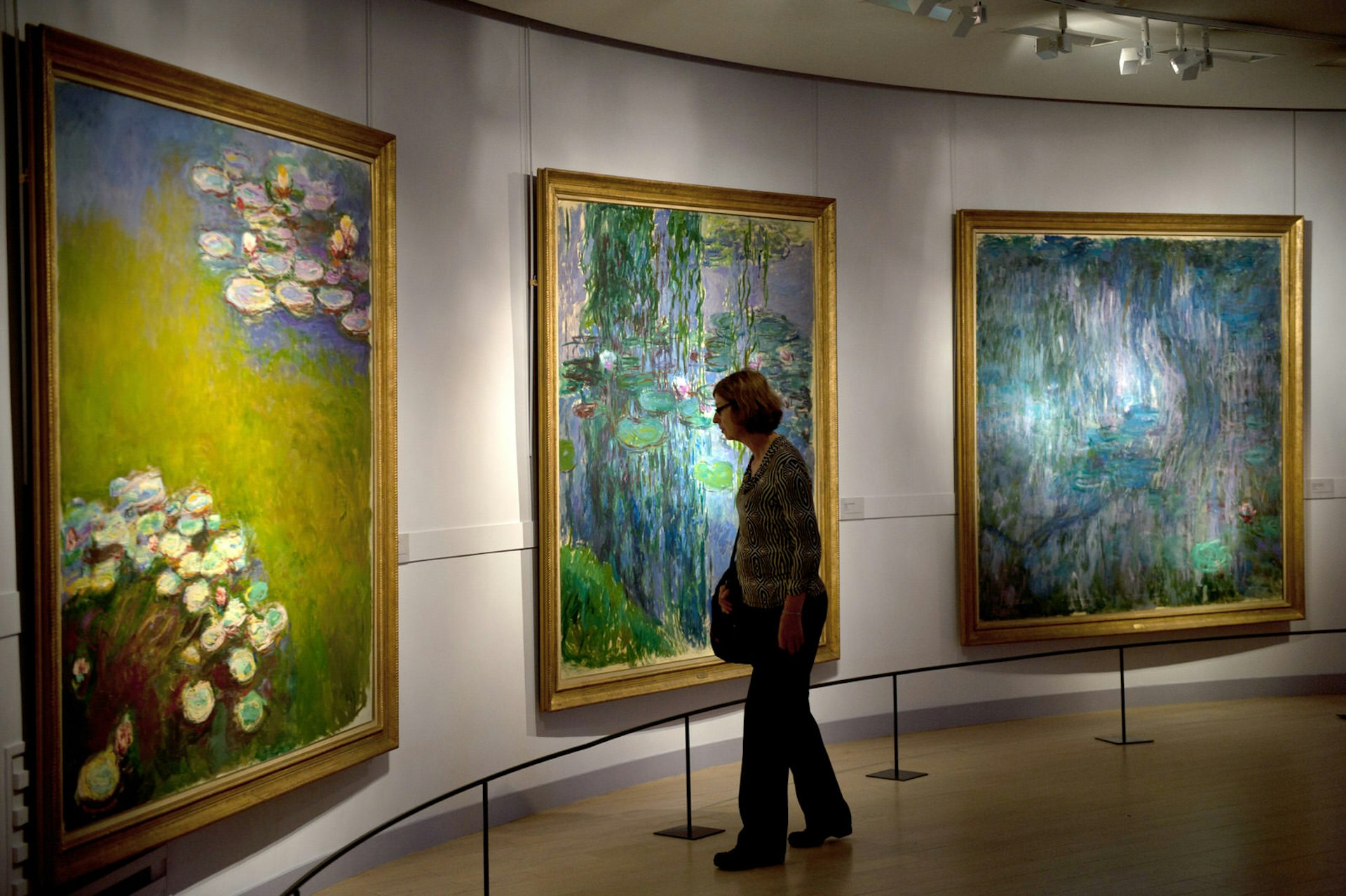
16th arrondissement
Best neighborhood for woodland walks
Incorporating the large Bois de Boulogne woodland area, the swanky Right Bank 16th arrondissement (seizième) is Paris' largest geographically. Top draws include the Palais de Chaillot's trio of museums overlooking the terraced Jardins du Trocadéro, while the hunting lodge-housed Musée Marmottan Monet is among its lesser-known gems.
You can’t come to the area without taking a walk in the woods or visiting the spectacular – and controversial – Frank Gehry–designed Fondation Louis Vuitton, which puts on some of the city’s headliners in terms of contemporary art shows. If you’re here with children, the Jardin d’Acclimatation is a brilliant park with rides and animals to see in the wild like squirrels and peacocks. In the south of the arrondissement, you’ll find Roland Garros, where the French Open takes place, which comes alive in summer.
Local tip: The most charming part of the area is around Passy metro, close to the Wine Museum and the rue de l’Annonciation. You can also visit the former home of French novelist and playwright Honoré de Balzac, which is nearby.

17th arrondissement
Best neighborhood for off-the-beaten-track Paris
Outside of Paris visitors' usual itineraries, the 17th arrondissement (dix-septième) is a mashup of classical Parisian residences, rejuvenated post-industrial areas and Clichy-Batignolles, a sustainable new "eco quarter," that’s known for its family-friendly credentials (numerous parks and gardens and restaurants where staff don’t bat an eyelid at a pushchair). In recent years, the artisan workshops and interior decoration firms have been replaced by upscale high-street boutiques and Instagram-friendly restaurants.
Local tip: Good if you want to do a spot of shopping without the crowds of the Marais. If you happen to be here, then don’t miss drinks and gigs, markets and other events, at the Hasard Ludique, a lively arty hub inside an abandoned station on Paris’ disused Petite Ceinture railway.

18th arrondissement
Best neighborhood for city views
The 18th arrondissement (dix-huitième) is synonymous with Montmartre's steep, ivy-clad streets crowned by hilltop Sacré-Cœur basilica. Portrait artists on touristy Place du Tertre recall the days when Picasso, Braque and Modigliani lived and worked here, though the throngs of tourists can detract from the romance of the area. To Montmartre's south is the (tame) red-light district Pigalle, home to the Moulin Rouge cabaret, while to its east, Château Rouge and La Goutte d'Or make up Paris' "Little Africa" neighborhood, with aromatic street markets, colorful fabric shops and a vibrant music scene.
Local tip: Once you’ve been to Montmartre, the other showstopper is Les Puces de Saint-Ouen just on the other side of the ring road across from Clignancourt metro station. Dive into the sprawling market stalls selling absolutely everything you can imagine, from rare antiques to jewelry, vintage door knobs to Air France posters, fireplaces and wooden staircases ripped out of crumbling stately homes, clothing and so much more.
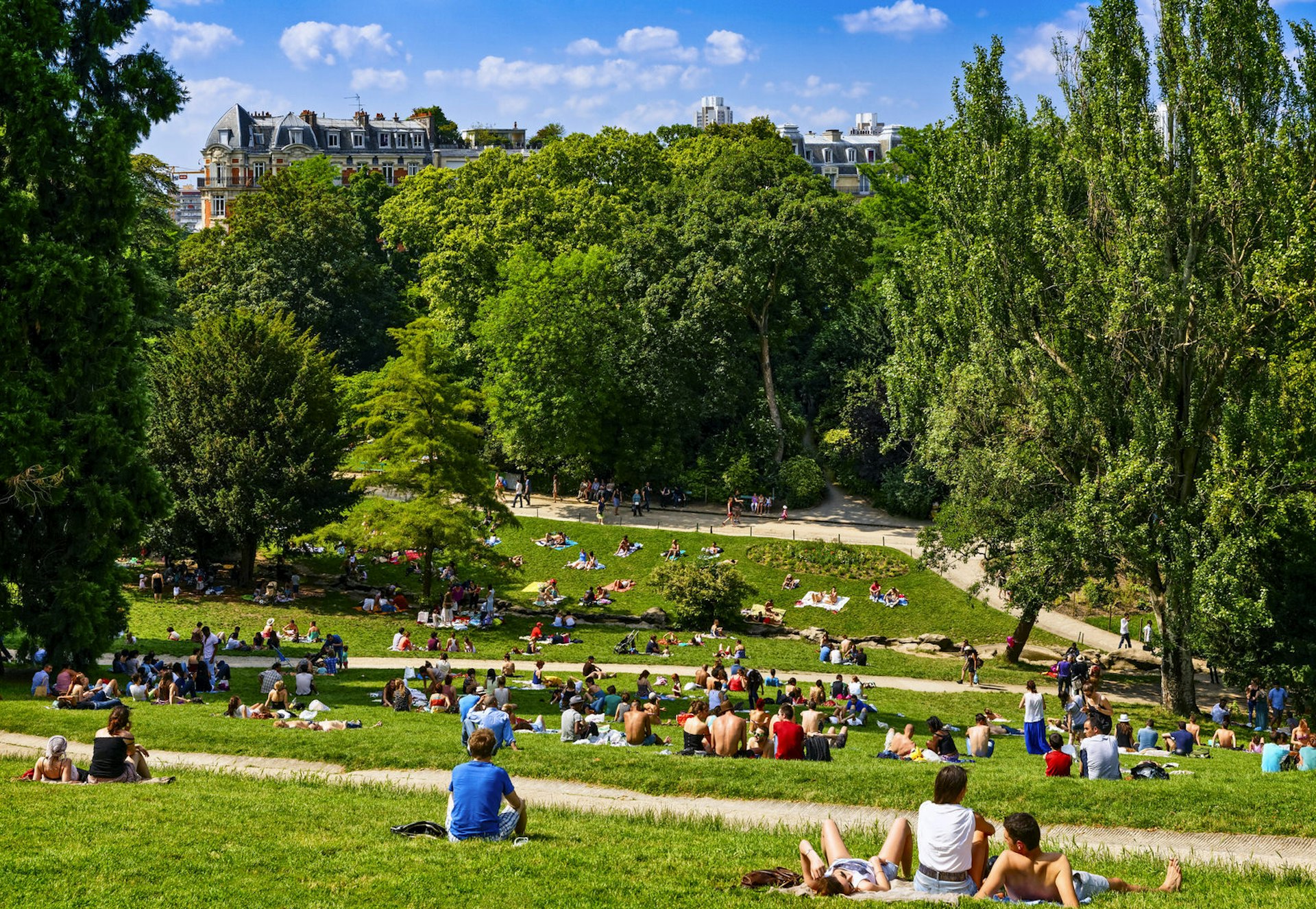
19th arrondissement
Best neighborhood for green spaces
Few tourists venture out to the far-flung 19th arrondissement (dix-neuvième), but despite some rough edges, highlights are the futuristic Parc de la Villette with museums and wide-ranging music venues including the Philharmonie de Paris concert hall. Take a break from the crowds at La Villette, which is now so packed with things to do for the whole family, that it feels more like a giant fairground than a bucolic Saturday afternoon in the park. A spot that still feels relaxed, although it does get very packed in summer, is the picturesque Parc des Buttes Chaumont on the outskirts of Belleville, with grottoes, waterfalls and a lake.
Local tip: The streets around, like the rue de la Villette close to the Jourdain area, have retained their indy vibe thanks to a handful of creative boutiques, bars and restaurants. Also, don’t miss a walk through the Mouzaïa neighborhood with pretty detached houses surrounded by leafy gardens, a rare sight in densely populated Paris.
20th arrondissement
Best neighborhood for paying respect to famous names
Paris' 20th arrondissement (vingtième) is home to Cimetière du Père Lachaise, burial place of famous names including Jim Morrison, Oscar Wilde, Édith Piaf and countless other celebrities. Otherwise under-the-radar, it takes in the gentrifying neighborhoods of Ménilmontant and Belleville (which technically straddles four arrondissements), with artist studios and wonderfully old-school hangouts such as Le Vieux Belleville, hosting accordion-accompanied chansons.
Local tip: Climb up to a charming pocket of houses lined up along quiet cobblestone streets in an area called la campagne à Paris close to Porte de Bagnolet metro station. Livelier areas of indy bars and restaurants are found on rue des Pyrénées and rue de Bagnolet, where, tucked in a small side street called Villa Rebeyrolle, are two alluring hidden restaurants: Caché and Amagat.
Keep planning your trip to Paris:
Now you know where to go, here's how to get around Paris
Discover ways to stretch your budget
Not sure when to visit Paris? We've got you covered
Know these 13 things before you visit
